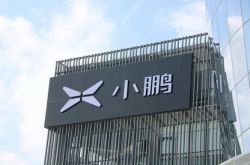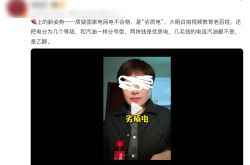Nezha's Dilemma, a Microcosm of the Automobile Manufacturing Industry
![]() 12/04 2024
12/04 2024
![]() 634
634

Surrounded by negative news of layoffs, salary cuts, and strategic adjustments, Nezha Auto's CEO Zhang Yong was not spared either.
Recently, there have even been rumors that Zhang Yong, CEO of Nezha Auto, has resigned.
However, Nezha Auto stated that Zhang Yong has not resigned and that the company's operations are currently normal.
Nevertheless, if we connect the previous news about Nezha Auto, it is not difficult to see that even if the rumor of Zhang Yong's resignation is not true, Nezha Auto is still in the midst of significant changes.
At the end of October, it was reported that Nezha Auto began implementing a salary reduction plan for all R&D personnel, and employees from various departments received salary reduction notices starting from October 29.
On October 30, Nezha Auto responded to reporters that the company had officially launched a company-wide equity incentive plan, allocating 5% of its shares (valued at approximately 2 billion yuan) as equity incentives for all employees. At the same time, a new plan for salaries and performance evaluations was announced internally.
On November 14, an informed source close to Nezha Auto revealed to reporters that the company would significantly streamline and integrate its first and second-level departments, optimize management levels, and strengthen the use of new AI tools such as large models. It is expected that after this round of adjustments, employee efficiency will increase by 40%, organizational operational efficiency will increase by 50%, and related operating expenses will be significantly reduced by more than 50%.
'After this strategic adjustment, Nezha Auto will allocate more resources to focus on overseas market expansion, while focusing on the sustainable operation of advantageous models in China to ensure that every investment generates tangible returns,' Nezha Auto said.
Regardless, from the above information, we can see that Nezha Auto is currently facing difficulties.
However, if we shift our focus away from Nezha Auto and examine the entire automobile manufacturing industry, it is evident that it is not just Nezha Auto but also other mid-tier and lower-tier players who are struggling.
In a sense, Nezha Auto's current dilemma may be a microcosm of the entire automobile manufacturing industry.
I
In fact, the reshuffling of the automobile manufacturing industry has already begun.
Whether it's the collapse of Evergrande Auto, the position of HiPhi, or the slow progress of FF across the ocean, we can see that the automobile manufacturing industry is no longer the prosperous scene it once was and is no longer a hot commodity pursued by the capital market.
Reshuffling and adjustments may be the main themes in the current automobile manufacturing industry.
If we connect the current calm in the automobile manufacturing industry with its past popularity, it is not surprising at all.
The reason is that the rapid development of the automobile manufacturing industry in the past was largely fueled by capital.
In other words, the prosperity of the automobile manufacturing industry in the past was actually achieved with the help of capital.
When capital loses interest, the automobile manufacturing industry naturally becomes less exciting.
As Nezha Auto encounters a series of difficulties, we need to see that the dilemma in the automobile manufacturing industry has begun to affect not only lower-tier players but also mid-tier players. In the future, more players may be involved, and the previous state of 'thousands of cars being launched simultaneously' in the automobile manufacturing industry may no longer exist.
For current automobile manufacturers, finding the right way to generate internal revenue rather than blindly relying on capital may be the key to solving the current development dilemma.
Whether it's Nezha's overseas expansion strategy or its cost reduction and efficiency enhancement strategy, they will likely be adopted by more automobile manufacturers in the future. When the previous bubbles in the automobile manufacturing industry are squeezed out, its development can truly enter a new stage of rational development.
This is good news for the automobile manufacturing industry. When the capital bubbles are squeezed out, the real competition will no longer be about marketing and conceptual abilities but about the ability to bring real change to the industry and win the market and users with technological power.
II
As the capital dividend begins to diminish and the development model that relied solely on capital infusions to barely function begins to expose more and more problems, the automobile manufacturing industry has entered a new stage, which is another main reason why Nezha Auto has fallen into a dilemma.
After the early land grab in automobile manufacturing and the mid-term user cultivation, the automobile manufacturing industry needs a new outlet to restart its future development.
In other words, automobile manufacturing is no longer just a concept but a stage where real innovation and development can be brought about by automobiles.
More directly, giving automobile manufacturing new connotations and meanings and providing a new interpretation for it is the key to bringing its development into a new stage.
Observing the development of leading players represented by Tesla, it is not difficult to see that by giving automobile manufacturing more connotations and meanings such as autonomous driving, AI, and ecological collaboration, and truly making automobile manufacturing a derivative of new cars rather than a way for players to attract the attention of the capital market, is the key to bringing the development of the automobile manufacturing industry into a new stage.
As we all know, Tesla has been sparing no effort to promote its FSD autonomous driving technology recently.
Ultimately, Tesla is actually giving its cars more new connotations and meanings in this way, rather than just limiting the definition of automobile manufacturing to the replacement of energy and drive methods.
For automobile manufacturers like Nezha, who did not achieve a true breakthrough in the early stages, they lost their first-mover advantage. When the competition in the automobile manufacturing industry enters a new stage, they lack the support of funds, technology, and other conditions. Therefore, as the competition in the automobile manufacturing industry enters a new stage, their development naturally begins to encounter more and more difficulties.
It is not an exaggeration to say that if Nezha Auto's dilemma cannot be completely resolved, it will not only fail to secure a place at the new table of the automobile manufacturing industry but may even lose at the old table.
III
In July of this year, the retail sales volume of the domestic passenger car market was 1.72 million units, of which 878,000 were new energy passenger cars, representing a year-on-year increase of 36.9% and a month-on-month increase of 2.8% compared to June. The retail penetration rate in the passenger car market reached 50.8%.
This is actually an important turning point worthy of our attention.
When the penetration rate of new energy vehicles in passenger cars exceeds 50%, the incremental market for the entire automobile manufacturing industry begins to hit the ceiling more and more.
In other words, when the stock era comes, what truly distinguishes automobile manufacturers will no longer be conceptual and marketing abilities but the 'hard power' of automobile manufacturers.
If we summarize and define these 'hard powers,' in addition to sufficient capital reserves like Xiaomi Auto, there is also the need for competitive advantages like Tesla's, as well as the ability for people, cars, and machines to work together.
If automobile manufacturers lack these 'hard powers' and want to achieve something in the stock era, it will undoubtedly be an uphill battle.
It can be said that the dilemma currently faced by Nezha Auto may appear in mid-tier or even top-tier players in the future.
Through Nezha's dilemma, we need to see more that many players in the automobile manufacturing industry have only seen the increment of new energy vehicles but have not truly seen the reality that new energy vehicles are entering the stock era.
As a result, they will not enhance their competitiveness in the stock era by deploying 'hard powers.' When this situation begins to occur, dilemmas similar to Nezha Auto's may appear in more players.
For current automobile manufacturers, continuously enhancing their added value, strengthening their influence, and finding the right ways and means to cope with the stock era may be the key to ensuring that they can continue to stay at the table.
Conclusion
Nezha's dilemma is just a microcosm of the current automobile manufacturing industry. In the future, dilemmas similar to Nezha's may begin to appear in more and more players.
Through Nezha's dilemma, we need to see that the development of the automobile manufacturing industry has entered the reality of the stock era, that the capital dividend has peaked, and that the competition in the automobile manufacturing industry has entered a deep and comprehensive stage.
When the dividend of the automobile manufacturing industry is squeezed out, it may really be time to compete on hard power.
Nezha was the first to feel the chill. Who will be next?





